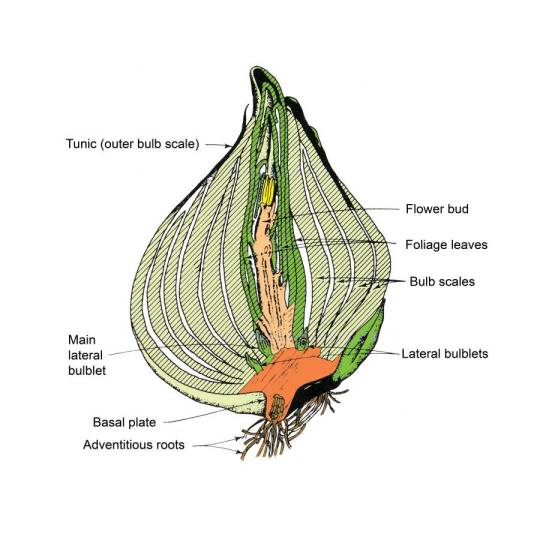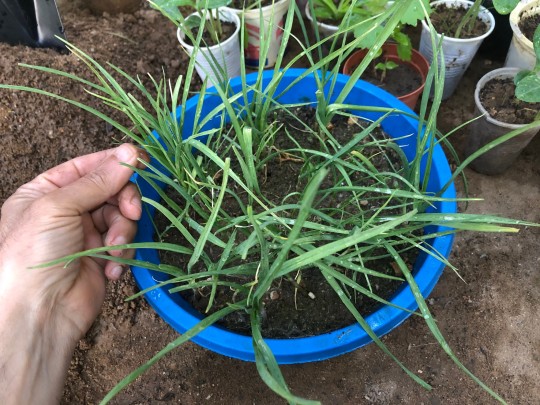#bulbille
Explore tagged Tumblr posts
Text
Le nénuphar


Jardiner Malin Le nénuphar s’adapte à tous les bassins à condition de le choisir de taille correspondant à ce dernier et d'effectuer sa division régulièrement. On l'appelle également Nymphea qui est son nom scientifique. Il est très facile d'entretien. Il s'agit d'une plante totalement aquatique et donc doit être immergée en permanence. La partie souterraine est composée d'un rhizome. En fait, il s'agit d'une plante essentiellement décorative. Vous trouverez dans le commerce des nénuphars pour tous types de bassins, petits, moyens, grands et très grands.
présentation
Le nénuphar s’adapte à tous les bassins à condition de le choisir de taille correspondant à ce dernier et d'effectuer sa division régulièrement. On l'appelle également Nymphea qui est son nom scientifique. Il est très facile d'entretien. Il s'agit d'une plante totalement aquatique et donc doit être immergée en permanence. La partie souterraine est composée d'un rhizome. En fait, il s'agit d'une plante essentiellement décorative. Vous trouverez dans le commerce des nénuphars pour tous types de bassins, petits, moyens, grands et très grands.
culture
Installez votre nénuphar dans votre bassin sur un emplacement ensoleillé. En effet, pour se développer dans de bonnes conditions, il doit avoir au minimum 6 heures de soleil par jour. D'autre part, je vous conseille d'éviter de l'installer sur un emplacement trop venté ainsi que près d'un jet d'eau, ce qui nuirait à son bon développement. Si votre bassin est suffisamment grand, vous pouvez associer plusieurs nénuphars afin de jouer avec les différents tons. Sachez qu'il faut prévoir 1 m2 environ pour chaque sujet. Sa période d'installation se situe du 15 mars au mois de septembre. En ce qui concerne les nénuphars exotiques, patientez jusqu'au mois de mai, voire juin. Pour les planter, il faut disposer des poches de terre au fond du bassin ou bien encore des paniers spécialement conçus pour les plantes aquatiques. Vous pouvez également utiliser des pots en plastique de 25 centimètres de diamètre pour les nénuphars nains ou de 50 centimètres pour ceux qui sont plus importants. Vos contenants doivent être impérativement percés au fond afin de permettre une bonne humidification du substrat que vous aurez mis dans vos pots. Remplissez vos contenant avec de l'argile ou avec du terreau pour plantes aquatiques. Évitez d'utiliser impérativement du terreau ordinaire qui risque de se disperser au fond du bassin. Plantez un seul rhizome par pot ou par panier. Le nénuphar est une plante très vigoureuse. Il va vite coloniser son contenant. Installez le rhizome en oblique dans le substrat argileux en ayant pris soin d'orienter le bourgeon terminal vers le haut. Étalez bien les racines et recouvrez de terre sans recouvrir le bourgeon. Manipulez les racines avec précaution car elles sont très fragiles. Ajoutez une voire deux pastilles d'engrais longue durée conçues pour les plantes aquatiques. A noter que ce dernier doit être pauvre en azote afin d'éviter le développement trop important du feuillage au détriment de la floraison. Il doit être riche en potasse afin que sa floraison soit éclatante. Utilisez bien un engrais pour plantes aquatiques et non un engrais ordinaire qui favorise le développement du feuillage au détriment de la floraison. Si dans votre bassin, vous avez des poissons, je vous conseille de recouvrir votre panier ou votre pot de graviers ou de petits cailloux afin que ces derniers ne viennent fouiller le substrat. En règle générale, les premières feuilles apparaissent au bout de quelques semaines. Si vous avez un bassin très profond (plus de 60 centimètres), je vous conseille d'effectuer minimum deux paliers voire trois. Quand les premières feuilles apparaissent à la surface de l'eau, descendez votre panier ou votre pot d'un palier. Cela favorise le développement de votre nénuphar.
entretien
En ce qui concerne le nénuphar rustique, son entretien est réduit au minimum. Il est inutile de protéger ou de sortir le rhizome pendant la saison hivernale, quel que soit votre région. A la saison printanière, vous devez enfouir dans le substrat deux pastilles d'engrais pour plantes aquatiques. Pendant la saison estivale, si vous constatez que votre nénuphar prend trop d'ampleur, supprimez quelques feuilles. Vous devez savoir que votre nénuphar doit recouvrir votre bassin au 2/3 au maximum. En ce qui concerne les nénuphars exotiques et suivant votre région, vous devez les rentrer soit à la fin du mois d'octobre voire novembre afin de les faire hiverner. Pour cela, vous devez déposer vos paniers ou vos pots dans de très grands contenants comme par exemple des poubelles. Entreposez ces derniers au chaud avec un minimum de 10° dans un local très lumineux et cela pendant toute la saison hivernale. Vous n'aurez qu'à les ressortir pour les remettre dans votre bassin à la saison printanière quand les températures seront bien remontées c'est à dire dans le courant du mois de mai voire du mois de juin.
parasites & maladies
Le nénuphar est sensible aux invasions de pucerons noirs à la fin de la saison printanière. Ils ne sont pas spécialement dangereux pour la plante, mais s'ils sont en grand nombre, il peuvent l'affaiblir car ils se nourrissent de sa sève, ce qui peut lui transmettre certaines maladies. La solution est de maintenir le feuillage sous l'eau pendant quelques minutes, le temps de les noyer. Le nénuphar peut être victime d'attaques de galéruque qui est un petit coléoptère qui creuse des galeries dans le feuillage. Les femelles pondent lorsque les températures montent à la fin du mois de mai, voire au début du mois de juin. Les œufs qui sont jaunes sont très faciles à repérer, d'autant plus qu'ils sont regroupés en petits paquets. Afin d'éviter la prolifération de ces derniers, écrasez-les régulièrement. Si vous n'arrivez pas à effectuer cette opération, il existe des traitements à base de Bacillus thuringiensis utilisé en agriculture biologique. Ce traitement est à appliquer sur le feuillage. La pyrale du nénuphar peut faire également des dégâts ce qui peut nuire à l'esthétique de la plante. Pour cela, effectuez un traitement à base de Bacillus thuringiensis. A noter que ce parasite, découpe un morceau de feuillage ovale de façon très régulier afin de se cacher très efficacement. C'est dans cette cachette que la nymphe effectue sa métamorphose. Certaines pourritures et moisissures apparaissent (taches jaunes sur le feuillage qui virent ensuite au noir), font mourir les feuilles. Ce problème est très souvent dû à des conditions de culture inadaptées. Certaines espèces sont plus sensibles, que d'autres. Si la pourriture est bien installée, il est difficile de sauver la plante. La meilleure façon est d'agir préventivement. Pour cela, il faut que votre bassin soit installé plein soleil, évitez de planter trop serré, n'enterrez jamais le bourgeon terminal de la plante à la plantation. Et pour terminer, je vous conseille de vérifier le PH de l'eau qui ne doit pas être trop basique, ni trop acide. Si dans votre région, les ragondins sont nombreux, il peuvent faire des ravages.
multiplication
Le nénuphar peut se diviser tous les 3 ou 4 ans quand il commence à moins fleurir et que le feuillage se chevauchent à la surface de l'eau. N'attendez pas trop longtemps car vous risquez de ne plus retrouver votre panier ou votre pot. En effet, vu le développement rapide du nénuphar, la puissance de son système racinaire fait éclater votre contenant et cela se transforme à un enchevêtrement de rhizomes. Dans ces conditions, il est difficile de découper des morceaux lors de la division. Effectuez une division de votre nénuphar soit à la saison printanière ou bien encore après sa floraison. Pour effectuer la division de votre nénuphar, sortez votre panier ou votre pot de l'eau. Ensuite, sortez très délicatement le rhizome. Passez-le sous l'eau afin de bien repérer le rhizome principal, les rhizomes secondaires, les racines et les bourgeons. Coupez des bouts de rhizome d'une dizaine de centimètres de long. Choisissez en priorité les extrémités des rhizomes secondaires qui doivent chacun posséder un bourgeon terminal (départ de feuilles) en excellent état et quelques racines. Plantez un morceau ainsi obtenu dans un panier ou bien un pot comme déjà expliqué précédemment. Offrez à vos amis ou à votre voisin les plus beaux morceaux et jetez le reste. En ce qui concerne le nénuphar exotiques, ces derniers émettent des bulbilles. Ce sont ces bulbilles qu'il faut séparer pour diviser la plante.
association
Le nénuphar peut être associé avec la grande glycérie et la bougie d'eau. Si vous avez un grand bassin, vous pouvez y incorporer des carpes koïs. De cette manière, ces dernières vous débarrasseront en partie des pucerons noirs. Le nénuphar peut être associé avec la grande glycérie et la bougie d'eau. Si vous avez un grand bassin, vous pouvez y incorporer des carpes koïs. De cette manière, ces dernières vous débarrasseront en partie des pucerons noirs. https://spotjardin.fr/2021/05/01/la-grande-glycerie/ https://spotjardin.fr/2021/04/27/la-bougie-deau/ Et pour terminer, je vous propose cette vidéo de la chaine YouTube TRUFFAUT https://youtu.be/aU-m7Ql7vp0 Read the full article
0 notes
Link
1 note
·
View note
Text
Tiny Bulbs, Big Impact: Unleashing the Taste Sensation of Garlic Bulbils in Stem!
A Culinary Adventure with Garlic Bulbils

Introduction
Prepare to embark on a flavor-packed culinary adventure as we dive into the world of Garlic Bulbils in Stem. Despite their diminutive size, these tiny bulbs are culinary powerhouses, promising to elevate your dishes and redefine your taste sensation. Join us in unraveling the secrets behind the big impact of Garlic Bulbils.
Discovering the Hidden Gems
Garlic Bulbils are the small, often overlooked, bulbs that sprout along the stem of the garlic plant. Bursting with a milder garlic flavor and a satisfying crunch, these tiny gems bring a unique dimension to your culinary creations.
The Taste Sensation: Why Garlic Bulbils Matter
1. Intense Flavor, Miniature Package
Despite their size, Garlic Bulbils pack an intense garlic flavor that is both aromatic and distinctive. Their small stature conceals a powerful taste sensation that transforms ordinary dishes into extraordinary culinary experiences.
2. Versatility Redefined
From salads to stir-fries, the versatility of Garlic Bulbils knows no bounds. Their mild yet flavorful profile allows for experimentation in a variety of dishes without overpowering the palate. Get ready to redefine your culinary boundaries and explore new taste territories.
3. Textural Delight
The unique texture of Garlic Bulbils adds a delightful crunch to your dishes. Whether used as a garnish or a key ingredient, their crispiness introduces a textural delight that enhances the overall eating experience.
Unleashing Culinary Creativity with Garlic Bulbils
1. Garlic Bulbils Infused Oils and Butters
Elevate your cooking by infusing oils or butters with the distinct taste of Garlic Bulbils. This infusion serves as a flavor base for dressings, marinades, or a spread for crusty bread, bringing a new level of sophistication to your kitchen creations.
2. Gourmet Seasonings
Ground Garlic Bulbils make for an exquisite gourmet seasoning. Sprinkle them over soups, stews, or roasted dishes to impart a nuanced garlic essence. Their concentrated flavor ensures a little goes a long way, transforming your recipes into culinary masterpieces.
3. Pickled Perfection
Explore the world of pickling with Garlic Bulbils. Their small size and robust flavor make them an ideal candidate for pickled vegetables, adding a zesty kick to your pickling adventures.
Elevating Every Dish: Cooking with Garlic Bulbils
1. Crisp and Fresh Salads
Add a burst of freshness and flavor to your salads by tossing in freshly harvested Garlic Bulbils. Their crisp texture and mild garlic taste make them a perfect addition to vibrant, garden-fresh salads.
2. Stir-Fried Sensations
Introduce Garlic Bulbils to your stir-fries for a dynamic twist. Their quick cooking time preserves their crunch, creating a delightful contrast to the other ingredients. Stir-fried dishes will never be the same.
3. Roasted Revelations
Roast Garlic Bulbils alongside your favorite vegetables or meats for a revelation in flavor. The roasting process enhances their natural sweetness and infuses your dishes with a rich, garlicky essence.
Conclusion
At Snip A Sage, the journey into the world of Garlic Bulbils in Stem is a celebration of taste, texture, and culinary creativity. These tiny bulbs may be small in size, but their impact on your dishes is nothing short of extraordinary. Unleash the taste sensation of Garlic Bulbils and elevate every meal to new heights.
0 notes
Video
youtube
Interesting Air Potato /Karanda , Edible Tuber In Roots & Tuber Mela 2...
#youtube#Edible Tuber#Dioscorea#bulbifera#Air Potato#Food Crop#Bulbils Edible#Tubers Edible#Like Small Potatoes#Perinnial#vinsmoke sanji#Karanda#Vine Potato#Invasive Vine#Food Source In Africa#Healthy Tuber#Health Benefits#Roots & Tuber Mela 2023 Mysore
0 notes
Text

Let’s talk about bulbils! joey makes fun of me on the reg for stealing these from all the forgotten scapes but GUYS
when garlic is done flowering, it leaves behind a small clone of the underground bulb at the top of the stalk (scape). ↓

as seen here in my one of my more popular tiktoks, with over 6 comments worldwide
this smol clone bulb is SO smol in fact, that instead of being called bulbs, they’re called bulbils. 🥹 you can plant them the same way you do a regular bulb, and doing so will even help to better accclimate your garlic to your specific growing conditions!! and doesn’t transmit soil-born disease!!! highly recommend if you want a 2-year garden project.

did i also mention that they are EDIBLE?
they are tiny bombs of garlic that you can do all kinds of fun things with without much work
toss them in salad! sprinkle em on top of pizza (my jersey trash fave!) crush em and toast them and have the best thing to dust on EVERYTHING

here i made garlic bulbil biscuits. just add them to dough as is!
common garlic is great to use for this if you grow it, but you can ALSO do this with field garlic (AKA onion grass, wild onion, allium vinneale, crow garlic). this is what i use mostly because it’s DAMN EVERYWHERE
enjoy fun knowledge and eat more garlic (future epitaph 💕)
134 notes
·
View notes
Text
The White Lily Greenhouse - How Would It Work?

Pure Vanilla Cookie has always been a favorite character to me because of his hobby of gardening. As someone who gardens as well as studies horticulture, it’s fun to see all of the gardens and plants he has in the story. The most notable example for me is the White Lily Greenhouse because it plays such an important role in Pure Vanilla’s character and story. He built it as a place to relax and to enjoy the white lilies he loves so much. But it made me wonder, how in the world would he manage it? Realistically it would take a lot of effort, and considering it's a private greenhouse within his castle, Pure Vanilla would most likely take care of it all alone.
Before I get into anything, I wanted to talk about the specific type of lilies that Pure Vanilla grows. The character White Lily Cookie is based on lilies in general, but most significantly the Madonna Lily. However, I couldn’t find much information about growing Madonna Lilies (Lilium candidum) in greenhouses specifically, so most of the information I have is from growing Easter Lilies (Lilum longiflorum) or lilies (Genus Lilum) in general in greenhouses. The growing requirements are mostly the same, but might have a few slight differences.
Specific Requirements for Growing Lilies and Greenhouses

(Diagram of a bulb, image taken from here)
So first, I wanted to explain briefly about the morphology of lilies and how that impacts their management. Most lilies grow from bulbs, which are specialized structures made up of a short fleshy stem enclosed by thick, fleshy leaves. At the bottom of a bulb is the base plate where the stem, leaves, and roots grow from. One way to propagate lilies is through bulblets (also called bulbils), small bulbs that grow from the base plate, which can be removed and planted on their own. However, the most common way is through bulb scales where the first (and sometimes second) outer portion of the leaf scales are removed and planted. But whatever the case, both the bulblets and bulbs scales need to go though some period of cold temperatures to break their dormancy. This means you can plant them in the fall and let them stay over the winter, or you could put them in a refrigerator to chill. Considering the Vanilla Kingdom is in a mountainous region and high up in the sky, I’m sure they can be put outside before transferring them to the greenhouse.
Heating and lighting are two important factors in making lilies grow well. Lilies need full sun, which is about 6 hours per day. Generally a south facing greenhouse will have more light exposure, otherwise you may need artificial lighting. Lilies will start growing when temperatures are warm enough, so greenhouses usually aim for 60 F, but they can also grow well up to 75 F. I'll discuss how heating and lighting might work for the white lily greenhouse.
Although lilies are perennials and bloom year after year if you maintain them, most ornamental gardens will plant new bulbs every year because old bulbs won’t produce as much or as big flowers as younger bulbs do. This would mean Pure Vanilla would have to dig up old bulbs and plant new ones every year, unless he has some type of special magic that will make them bloom as big and numerous consistently.
Weeding and pest management are always something to keep in mind with greenhouses, but if you don't let them become a problem then it's pretty easy to deal with. Proper sanitation like removing weeds before they produce seeds, removing plant debris and dead plants, and having clean growing media will all help prevent problems. I think Pure Vanilla is vigilant enough to do all of that.
Historical Greenhouses

(A classic greenhouse from England, image taken from here)
In the past, greenhouses were heated just by the sun or with additional heating like furnaces, hot water, or steam. This meant that temperature control was not very precise and had to be fiddled with in order for the greenhouse to be properly heated. If this was the case, I think there would have been some type of boiler specifically for the greenhouse situated at a higher elevation so that the hot water/steam could be carried by gravity into the greenhouse. Water for irrigation had to be brought in unless you had a nearby water pump. Carrying water in would have taken a lot of effort, not to mention that you would have to do watering by hand, which would have been tedious for one person. However, I doubt that Pure Vanilla would mind with his patient nature and enthusiasm for gardening.
The cost of glass and steel to build the greenhouse itself would have been expensive. But taking into account that Pure Vanilla was a king, he probably didn’t have much trouble with the cost of construction or equipment.
The Vanilla Kingdom is based on Germanic countries, and those countries have a long history of using greenhouses. During the 16th and 17th centuries places like England, France, Italy, and the Netherlands had greenhouses to grow exotic plants that they collected. So the locale and inspiration for the kingdom lines up.
The Modern Approach

(A modern Dutch style greenhouse, image from here)
Considering the Vanilla Kingdom had the waffle bots and advanced technology, it would be reasonable that Pure Vanilla could have access to more modern greenhouse technology similar to what we have today. Things like automatic misting systems, electrical and gas powered heating, and artificial greenhouse lighting. Not to mention all the sensors and timers that can help automate things. However, I’ve seen greenhouses built pretty recently that still use hot water pipes to heat the greenhouse and manually watering their plants. Seeing that Pure Vanilla is more old fashioned and traditional, he could have also run his greenhouse using old school methods.
Of course, all of this can be hand waved with magic but I like to think that the creation of spells is also considered special techniques that have to be learned and trained. I'm sure that Pure Vanilla or even White Lily Cookie could have developed some type of specialized magic to grow plants easier, similar to how in real life new technology is constantly being developed in order to more efficiently grow plants.
Sources:
https://wyoextension.org/publications/html/B1185R/
#cookie run#cookie run kingdom#pure vanilla cookie#horticulture#I've worked in a 'historical' greenhouse that's nearly a century old#and toured many modern greenhouses#some more technologically advanced than others#so I am interested in greenhouse production but I'm not sure if it's something I want to pursue as a career#but anyways I now have more respect for pure vanilla for managing his own private greenhouse by himself
30 notes
·
View notes
Photo


Agave vilmoriniana ‘Stained Glass’
Agave vilmoriniana is sometimes called the “octopus agave” because of its long sinuous leaves, which with little imagination can be likened to the arms of an octopus. Like other agaves, it dies after flowering, and it is a species that does not make offsets, but it manages to keep going by producing many little plantlets (bulbils) on its flower stalk. These bulbils are clones of the mother plant, and they serve as a back-up means of reproduction in case no seeds germinate successfully. This species occurs over a large area of western Mexico along the Sierra Madre Occidental. The cultivar ‘Stained Glass’ is a variegated form, with yellow margins on its leaves.
-Brian
39 notes
·
View notes
Text
just looked up agave and aparently its one of the cacti we have at home
damnnn it, i thought it was something special, the "bulbil" i was so fascinated with is already very normal to me
imagine if you met god and he turned out to be the pados ke paan peekne wale uncle
feeling like that now
19 notes
·
View notes
Text

Growing garlic from bulbils, which are inside the plant's flower umbel, is rewarding. A bulbil is a small, young garlic that is reproduced vegetatively from axillary buds on the parent plant's stem.

These young plants are clones of the parent plant that produced them. Here's a step-by-step guide to help you get started, so keep reading!
#gyo#gardening uk#gardenchat#lovegardening#gardening#garden#gardening tips#organic gardening#vegetable gardening#backyard#garlic#garlicbulbs#garlicseed#growyourown#growyourownveggies#growyourfood#vegetables#gardeners#gardenersofinstagram#gardeningtips#gardeningtip#growingvegetables#growingveggies#indoorgardening#gardeningtipsforbeginners#organic garden#botanical garden#gardenblr#gardencore#gardeners on tumblr
9 notes
·
View notes
Text
Air potato bulbil-eating beetles make funny noises.
#entomology#beetles#air potato#invasive species#Its a very quiet sound#kinda like freshly a opened coke and kinda like cleaning glass#with a side of dogs barking in the distance and evening cicada choirs
2 notes
·
View notes
Text










I refreshed the Spiritual pop and Secular drones playlists on the Blue Tapes Soundcloud that act as a sort of primer to the different hemispheres of the label.
Spiritual pop encapsulates the lighter, more playful side of our work, with contributions from Katie Gately, Tashi Dorji, Henry Plotnick, The Library of Babel, Stuart Chalmers and Taming Power, Hey String, Richard Youngs, Bulbils, Ashtray Navigations and Dane Law.
Secular drones summarises the darker, noisier end of things: Threes and Will, Father Murphy, Jute Gyte, Trupa Trupa, Unfollow, Mats Gustafsson, Ratkiller, Cadu Tenorio and Gultskra Artikler. Click the links in the first para to explore!
#blue tapes#experimental music#tapes#ambient#cassettes#drone#bandcamp#tape label#richard youngs#richard dawson#trupa trupa#shane parish#tashi dorji#katie gately#mats gustafsson#jute gyte
6 notes
·
View notes
Text
1 note
·
View note
Link
1 note
·
View note
Text
Tiny Bulbs, Big Impact: Unleashing the Taste Sensation of Garlic Bulbils in Stem!
A Culinary Adventure with Garlic Bulbils

Introduction
Prepare to embark on a flavor-packed culinary adventure as we dive into the world of Garlic Bulbils in Stem. Despite their diminutive size, these tiny bulbs are culinary powerhouses, promising to elevate your dishes and redefine your taste sensation. Join us in unraveling the secrets behind the big impact of Garlic Bulbils.
Discovering the Hidden Gems
Garlic Bulbils are the small, often overlooked, bulbs that sprout along the stem of the garlic plant. Bursting with a milder garlic flavor and a satisfying crunch, these tiny gems bring a unique dimension to your culinary creations.
The Taste Sensation: Why Garlic Bulbils Matter
1. Intense Flavor, Miniature Package
Despite their size, Garlic Bulbils pack an intense garlic flavor that is both aromatic and distinctive. Their small stature conceals a powerful taste sensation that transforms ordinary dishes into extraordinary culinary experiences.
2. Versatility Redefined
From salads to stir-fries, the versatility of Garlic Bulbils knows no bounds. Their mild yet flavorful profile allows for experimentation in a variety of dishes without overpowering the palate. Get ready to redefine your culinary boundaries and explore new taste territories.
3. Textural Delight
The unique texture of Garlic Bulbils adds a delightful crunch to your dishes. Whether used as a garnish or a key ingredient, their crispiness introduces a textural delight that enhances the overall eating experience.
Unleashing Culinary Creativity with Garlic Bulbils
1. Garlic Bulbils Infused Oils and Butters
Elevate your cooking by infusing oils or butters with the distinct taste of Garlic Bulbils. This infusion serves as a flavor base for dressings, marinades, or a spread for crusty bread, bringing a new level of sophistication to your kitchen creations.
2. Gourmet Seasonings
Ground Garlic Bulbils make for an exquisite gourmet seasoning. Sprinkle them over soups, stews, or roasted dishes to impart a nuanced garlic essence. Their concentrated flavor ensures a little goes a long way, transforming your recipes into culinary masterpieces.
3. Pickled Perfection
Explore the world of pickling with Garlic Bulbils. Their small size and robust flavor make them an ideal candidate for pickled vegetables, adding a zesty kick to your pickling adventures.
Elevating Every Dish: Cooking with Garlic Bulbils
1. Crisp and Fresh Salads
Add a burst of freshness and flavor to your salads by tossing in freshly harvested Garlic Bulbils. Their crisp texture and mild garlic taste make them a perfect addition to vibrant, garden-fresh salads.
2. Stir-Fried Sensations
Introduce Garlic Bulbils to your stir-fries for a dynamic twist. Their quick cooking time preserves their crunch, creating a delightful contrast to the other ingredients. Stir-fried dishes will never be the same.
3. Roasted Revelations
Roast Garlic Bulbils alongside your favorite vegetables or meats for a revelation in flavor. The roasting process enhances their natural sweetness and infuses your dishes with a rich, garlicky essence.
Conclusion
At Snip A Sage, the journey into the world of Garlic Bulbils in Stem is a celebration of taste, texture, and culinary creativity. These tiny bulbs may be small in size, but their impact on your dishes is nothing short of extraordinary. Unleash the taste sensation of Garlic Bulbils and elevate every meal to new heights.
0 notes



